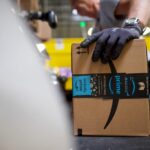People may not realize that retail enterprises have long been among the early adopters of new technology applications in their fight to stay ahead of the competition. In recent years, retailers flocked to Internet of Things (IoT) systems to optimize operations in the face of ever-changing pandemic protocols and to combat ongoing concerns about shrink and inflation. While many retailers initially adopted these systems to address acute concerns, IoT systems have numerous applications within retail enterprises. These systems leverage real-time and historical data from within a store that can be used to optimize every facet of a retailer’s operations.
Digital Transformations for Better Operations
Reliable, comprehensive source data is a retailer’s most valuable asset, and IoT-connected systems can provide just that. Stores used to rely on disjointed electronic article surveillance (EAS) and video surveillance systems to monitor their operations, but the rise of connected devices has revolutionized retail over the past few years. Modern IoT technology takes these systems one step further by connecting them, giving retailers deeper insight into their operations than ever before. Today’s ecosystems of powerful connected tools offer retailers a more precise account of items’ journeys throughout stores, shopper decisions, and other source data to provide actionable insights based on real-time and historical data.
For example, item-level inventory systems can keep track of product locations on the floor and provide to-the-minute information on stocking levels. These systems rely on radio frequency identification (RFID) technology alongside EAS systems and can identify items as they move around the store. Armed with this information, retailers can get better insights into their current stock, the way shoppers move throughout the store, and more to understand shrink rates and other metrics — a crucial undertaking for retailers looking to optimize buy online, pick up in-store (BOPIS) programs and other next-generation initiatives.
These combined systems are particularly powerful when retailers invest in integrated artificial intelligence (AI) capabilities. Using machine learning and computer vision technology can supercharge IoT cameras and sensors. These suites can help retailers collect data that goes far beyond the traditional point-of-sale log, offering insights into products likely to contribute to shrink, such as in-demand merchandise that’s an easy target for petty shoplifters.
Given modern shoppers’ rising concerns about environmental protection, sustainability-focused uses of these systems may prove to be the most lucrative application of all. For example, connected food safety solutions represent a convergence of IoT’s retail benefits as they leverage cloud and connected technologies, mobile applications, and data analytics to monitor temperature-controlled displays in real time to mitigate food waste and loss. They also help retailers comply with health and safety guidelines, keep consumers safe, and pursue more sustainable operations.
In addition to keeping spoiled food off shelves and out of shoppers’ homes, these systems can also help retailers establish sustainability baselines to help them deliver on promises of responsible operations by monitoring and analyzing information about wasted inventory, energy usage, and other areas. Having access to this information can help retailers develop road maps to sustainable solutions like hard tag recycling programs, optimized BOPIS programs, energy-efficient floor layouts, and more, all of which can aid in the pursuit of a healthier, more sustainable retail industry.
Connected Stores, Brighter Futures
Retailers that take advantage of today’s IoT technology are investing in their own companies as well as their communities. They’re investing in resiliency today and tomorrow — even if they don’t know what challenges tomorrow will bring. With this in mind, IoT ecosystems are poised to become the beating heart of operational excellence within retail locations, battling nearly every challenge retailers face.
Craig Szklany is the vice president and product general manager, loss prevention and liability at Sensormatic Solutions, a global leader in retail systems including RFID, EAS, anti-theft tags and labels, detachers, inventory management and retail traffic solutions.
View Original Article

















